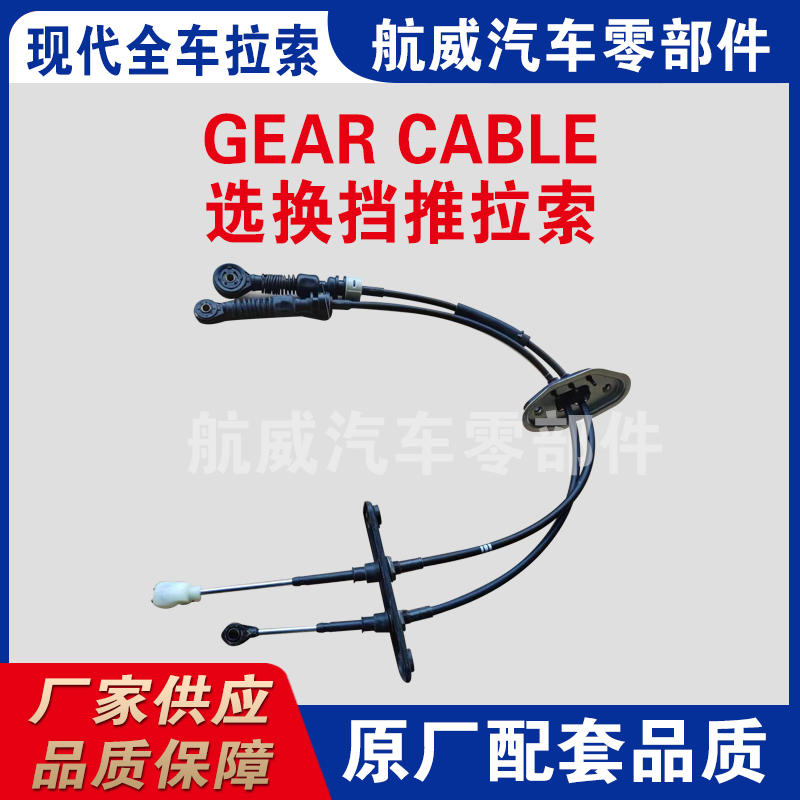handbrake cables
Understanding Handbrake Cables Importance, Types, and Maintenance
The handbrake, also known as the parking brake, is a crucial component in the safety and functionality of vehicles. One of the most vital parts of the handbrake system is the handbrake cable. This article explores the significance, types, and maintenance of handbrake cables, ensuring a comprehensive understanding for vehicle owners and enthusiasts.
The Importance of Handbrake Cables
The primary role of the handbrake cable is to transmit force from the handbrake lever to the brake mechanism on the rear wheels. When engaged, the handbrake cable pulls on the brake shoes or pads, creating friction that prevents the vehicle from rolling. This functionality is especially critical when parking on slopes or when stopping the vehicle in an emergency. A failure in the handbrake cable can lead to serious accidents, making it imperative for drivers to ensure their handbrake systems are in good working order.
Types of Handbrake Cables
Handbrake cables can vary in design and material depending on the vehicle make and model. Here are the common types
1. Steel Cables Traditional handbrake cables are made from high-strength steel, known for its durability and resistance to stretching. These cables are often coated to prevent rust and corrosion, which can be detrimental to their performance.
2. Plastic-coated Cables Some modern vehicles use cables with a plastic coating. This design aids in reducing friction, making the handbrake system more responsive. It also helps in resisting environmental damage, extending the lifespan of the cable.
3. Composite Cables A newer trend includes the use of composite materials that combine the benefits of both steel and plastic. These cables often boast higher resistance to wear and tear, as well as improved flexibility and strength.
4. Adjustable Cables Certain vehicles may come equipped with adjustable handbrake cables, allowing for fine-tuning to ensure optimal tension. This feature proves beneficial in maintaining the effectiveness of the handbrake over time, especially after wear.
Signs of Worn or Damaged Handbrake Cables
Recognizing the signs of a malfunctioning handbrake cable is crucial for vehicle safety. Common indicators include
handbrake cables

- Increased Pulling Force If the handbrake lever requires significantly more effort to engage, it may indicate that the cable is frayed or damaged. - Slipping If the vehicle rolls when the handbrake is engaged, this is a critical sign that the cable may have lost tension or become disconnected from the brake mechanism.
- Uneven Brake Wear A malfunctioning cable can cause uneven braking, leading to premature wear on the brake components.
- Visible Damage Inspecting the cable for frays, corrosion, or breaks can be an indicator of its condition. Regular visual checks can prevent potential failures.
Maintenance Tips for Handbrake Cables
Maintaining handbrake cables is essential for ensuring safety and longevity. Here are some useful tips
1. Regular Inspections Periodically check the condition of the cables, looking for any signs of wear or damage. This should be part of routine vehicle maintenance.
2. Ensure Proper Tension If you notice the handbrake lever feels loose, it may be time to adjust the tension of the cable to ensure proper function.
3. Lubrication While many cables are designed to be maintenance-free, ensuring that the connection points are lubricated can help reduce friction and wear.
4. Replace When Necessary If you detect any issues with the handbrake cable, address them immediately. Replacement cables are readily available, and it is advisable to consult a professional for installation if unsure.
Conclusion
Handbrake cables, although often overlooked, play a vital role in vehicle safety. Understanding their importance, types, and maintenance can help vehicle owners ensure their handbrake systems function correctly, preventing accidents and promoting a safe driving experience. Regular checks and maintenance can go a long way in ensuring the longevity and reliability of this essential component.
-
Workings of Clutch Pipe and Hose SystemsNewsJun.04,2025
-
The Inner Workings of Hand Brake Cable SystemsNewsJun.04,2025
-
The Secrets of Throttle and Accelerator CablesNewsJun.04,2025
-
The Hidden Lifeline of Your Transmission Gear Shift CablesNewsJun.04,2025
-
Demystifying Gear Cables and Shift LinkagesNewsJun.04,2025
-
Decoding Clutch Line Systems A Comprehensive GuideNewsJun.04,2025
